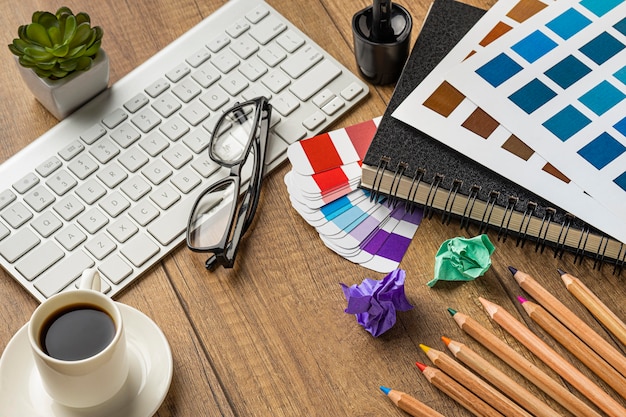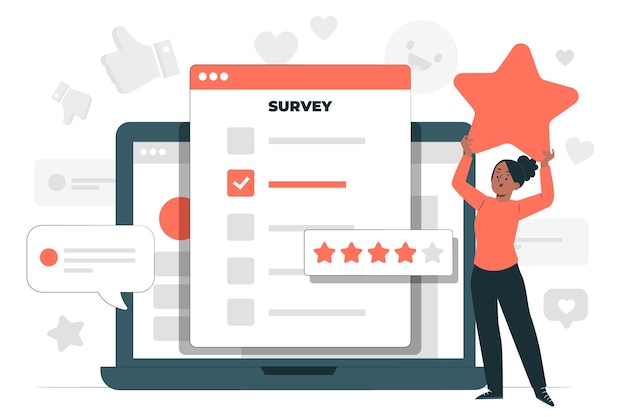What is product design?
Product design is the intricate process of conceptualizing, creating, and refining objects to meet specific needs or solve particular problems. At its core, product design is about transforming ideas into physical or digital products that resonate with users and fulfill market demands. It involves a unique blend of creativity, functionality, and practicality. Product design is all about striking the right balance between aesthetics and utility.

What is product design?
It’s the strategic approach to introducing solutions that enhance the human experience, whether it’s through everyday items like kitchen gadgets or cutting-edge technological innovations. Design of products isn’t limited to just how they look; it extends to how they function, how they feel in the user’s hands, and how they integrate into their lives seamlessly.
Product design also serves as the bridge between imagination and reality, where ideas are brought to life through a meticulous process of research, ideation, prototyping, and iteration. It’s about understanding user needs, market trends, and technological possibilities to create products that not only meet expectations but exceed them. From the sleek lines of a smartphone to the ergonomic design of a chair, product design is the process that shapes the world around us.
Designing a product
Designing a product involves many different parts, and it needs people from different parts of a company to work together. In the beginning, we have to figure out what people need or want from a product. This means researching to learn about what customers like and what they don’t. Then, the team starts to think of ideas and draw them out on paper. This is called brainstorming and sketching. After that, they make models of the ideas, called prototypes, to see how they work in real life.

Collaboration
Company product design is when all these steps happen within a company. Instead of just one person doing everything, it’s a whole team working together. They share ideas and work on them until they find the best ones. And it’s not just about making something that looks good. The goal is to make something that’s helpful and makes people’s lives better. That’s why product design is so important.
When we talk about what is a product design, we’re talking about all these things. It’s not just about the final product; it’s about the whole process of creating it. It’s about coming up with ideas, making them real, and making sure they’re useful. And it’s something that happens in companies when they want to make new things for people to use.
Examples
Typically, there are 2 approaches toward product design that a company can take.
- Business thinking – this involves identifying a problem and coming up with a solution.
- Design thinking – this approach involves understanding the problem first and how it helps the company achieve its business objectives. Questions like ‘What is the problem we are solving? ‘Who has this problem?’ and ‘What do we want to achieve?’ can help designers with the design process.
Expert designers leverage the design thinking process to design products. This helps build better products as it involves considering a comprehensive user experience rather than just building products that look and feel good. Answering these questions before moving to find a solution helps companies find better product market fit.
Process of designing a product
Designing a product as a solution to a problem is a 5-step process.
Empathize – You start by learning about the people who have a problem that needs to be solved. It’s important to conduct research and have a deeper understanding of who the user is and what they want. Studying how people use similar products in the market can also be fruitful. This can help designers identify chances for improvement or innovation.
Define – Use the research to identify user needs and insights. You can create multiple personas or points of view to better define the problem at hand.
Ideate – Ideation involves brainstorming and coming up with as many solutions as possible. Often companies involve several stakeholders in this process and they all throw in ideas. From the ideas collected, shortlist potential solutions. Giving your employees complete freedom in this process is key to getting ingenious and creative ideas.
Prototype – Develop prototypes based on the ideas you had. This will help designers see if they are approaching the problem correctly and sometimes offer greater clarity for the solution.
Test – Get users to test the prototype to see if it solves the problem and is the perfect solution for your users.
Throughout the design process, user experience (UX) design plays a significant role. UX design focuses on creating a seamless and enjoyable experience for users. It involves considering factors such as ease of use, accessibility, and satisfaction. Product designers work closely with UX designers to ensure that the final product meets the needs and expectations of users. The product should not only look good but should also provide a positive user experience.
Examples of product design
Let’s take the development of a new smartwatch as an example to illustrate the step-by-step journey of the product design process.
- Identifying the Need: The process begins with identifying a need in the market. In this case, the increasing demand for wearable technology presents an opportunity to create a new smartwatch that combines style with functionality.
- Research and Analysis: Product designers conduct thorough research to understand user preferences, market trends, and technological advancements. They analyze existing smartwatches to identify strengths, weaknesses, and areas for improvement.
- Conceptualization and Ideation: Based on their research findings, the design team brainstormed ideas for the new smartwatch. They sketch out different concepts, considering factors such as design aesthetics, features, and user experience.
- Prototyping: Once a promising concept is selected, the designers create prototypes to visualize the idea in real life. Prototypes allow them to test the functionality and usability of the smartwatch and gather feedback for refinement.
- Refinement: The initial prototypes undergo rigorous testing and evaluation. User feedback is collected to identify any issues or areas for improvement. Designers iteratively refine the smartwatch design based on this feedback, making adjustments to enhance performance and user experience.
- Manufacturing and Production: After several rounds of refinement, the final design is ready for production. The manufacturing process involves sourcing materials, assembling components, and ensuring quality control to meet the standards set by the design team.
- Launch and Market Feedback: The new smartwatch is launched into the market, and its performance is closely monitored. Feedback from early adopters and reviewers provides valuable insights for future iterations and product enhancements.

Throughout this example, we see how the product design process unfolds, from identifying a need to refining the final product. Prototyping and iteration play crucial roles in ensuring that the smartwatch meets user expectations and stands out in a competitive market. By following a systematic approach, the design team successfully brings the new smartwatch from concept to reality, demonstrating the power of effective product design.
Designing a New Product
Designing a new product involves the same product design stages but one essential step is creating mockups to visualize the product’s design and functionality. Mockups are simplified representations of the product that help designers and stakeholders understand how users will interact with it.
During the design process, designers use mockups to explore different concepts and iterate on ideas. They create mockups of different features and interfaces to test usability and gather feedback from users. By observing how users interact with the mockups, designers can identify potential issues and make necessary adjustments to improve the product’s design.
Mockups
Mockups also serve as a communication tool between designers, developers, and other stakeholders involved in the project. They provide a tangible visual reference that helps everyone understand the intended design direction and user experience.
User interaction is a key aspect of designing a new product. Designers must consider how users will interact with the product at every stage of the design process. By incorporating user feedback and testing user interactions with mockups, designers can create products that are intuitive and easy to use, ultimately leading to a better overall user experience.
Bottom Line
In conclusion, product design is a dynamic and iterative process that involves creativity, problem-solving, and collaboration. By understanding user needs, leveraging technology, and embracing innovation, companies can create products that not only meet market demands, but enable exciting marketing campaigns and delight users and drive business success.













